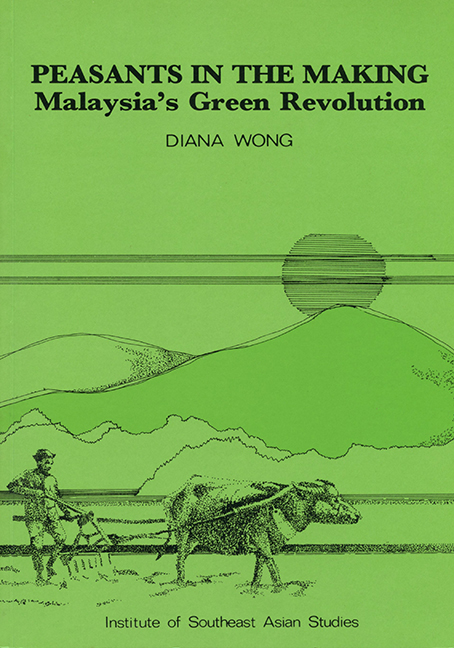Book contents
- Frontmatter
- Contents
- Acknowledgements
- Part I The Framing of the Study
- Chapter 1 The Empirical Setting: The Green Revolution and Muda
- Chapter 2 Peasant Reproduction: A Framework of Analysis
- Chapter 3 The Making of the Muda Region: The Social Organization of Land Colonization
- Part II The Anatomy of the Village
- Part III The Transformation of the Village Economy
- Part IV The Transformation of Village Society: The Unfolding of Social Differentiation
- Part V Conclusion
- Appendix I Research Methodology
- Appendix II Questionnaire
- Bibliography
- THE AUTHOR
Chapter 3 - The Making of the Muda Region: The Social Organization of Land Colonization
from Part I - The Framing of the Study
Published online by Cambridge University Press: 21 October 2015
- Frontmatter
- Contents
- Acknowledgements
- Part I The Framing of the Study
- Chapter 1 The Empirical Setting: The Green Revolution and Muda
- Chapter 2 Peasant Reproduction: A Framework of Analysis
- Chapter 3 The Making of the Muda Region: The Social Organization of Land Colonization
- Part II The Anatomy of the Village
- Part III The Transformation of the Village Economy
- Part IV The Transformation of Village Society: The Unfolding of Social Differentiation
- Part V Conclusion
- Appendix I Research Methodology
- Appendix II Questionnaire
- Bibliography
- THE AUTHOR
Summary
INTRODUCTION
Most studies of the Green Revolution conceive of it as the vehicle with which a pre-capitalist peasantry is brought into the fold of a market economy. The following comment is typical:
This integration of the peasantry into the market economy is not achieved without strain. It inevitably involves the disintegration of the traditional society and the submission to external interests of those patterns that are preserved.
The nature of this traditional peasantry as evocated in statements like “padi planting is therefore never a business proposition. It is a way of life”, is widespread as conventional wisdom not merely in political discourse but also in the academic literature. A geographer's description of the North Kedah Plain in 1951 made repeated reference to the “self-contained subsistence farmers who plant a few coconuts around their huts to supplement their rice and set traps in the glam swamp for edible fish.” Further in the text, he adds: “Throughout this period (between 1911-47) a close approximation to self-contained subsistence farming based on padi has been the mode of life on the Plain…”
Furthermore,
rents and even wages for harvest labourers are still often in kind, in padi rather than in cash; much of the padi which comes off the farm to enter trade is derived from these peasant payments in kind.
The system is thus seen to comprise a large mass of small producers with an intact subsistence cycle, surplus for trade being extracted via rents in kind. Alternatively, the marketed surplus is seen to issue from larger farms which produce sufficient quantities to engage in “commercial production”. Thus, in the calculations of the CPR study:
Looking at the 1955 census figures again and using 10 relong as a cut-off point after which the greater proportion of labour for the farm is assumed to come from hired labour making it a commercial one, we note already the presence of as many as 8,000 farmers who were engaged in market-oriented production of padi.[…]
- Type
- Chapter
- Information
- Peasants in the MakingMalaysia's Green Revolution, pp. 29 - 42Publisher: ISEAS–Yusof Ishak InstitutePrint publication year: 1987



